Is your website causing you problems that you don’t know how to prevent? We have been entrusted for over 8 years, building and maintaining websites for businesses like yours, and we have the case studies to prove it.
Your business’s website is one of the most critical meeting points between you and your customers. We like to think of your website as part of your sales team, operating 24/7 and reaching thousands of potential customers at once.
Maintaining performance and conversion optimised websites are crucial. It helps you find areas to reach new customers, become the leader in your industry, and grow client relationships.
These are the common website problems, and how to solve them:
- Websites that are left for dead
- Outdated website design
- Websites that are not periodically backed up
- Lack of on-page optimisation and call to actions
- Little or no social sharing options
- Self-managing time-consuming website tasks
- Lack of website metrics and conversion tracking
- Little to no thought put towards getting the website to rank
- Poor user experience on mobile devices
We’ve been managing hundreds of WordPress websites for many years. After a while, a clear pattern of common website problems became apparent to us. These nine problems are extremely common, however, maintaining them is another story.
We know you have a whole business to run and focussing on fixing little problems throughout your entire website can be tiresome in the long run.
Need someone to help manage and maintain it for you? Our experienced team is here to help and can save you those headaches in moments.
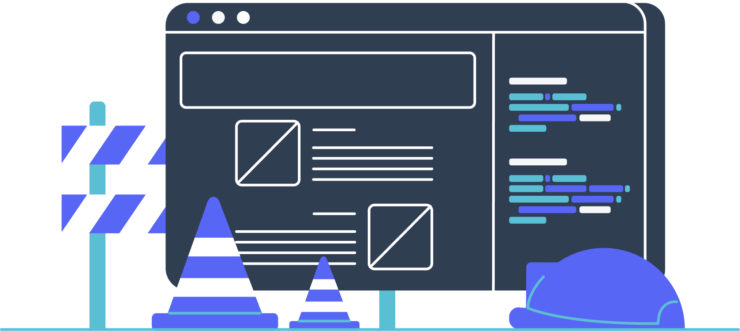
1. Websites that are left for dead
The biggest problem we come across is businesses that have a website built which is then never touched again once it goes online.
Around half of the small businesses we work with employ their administrator or receptionist to manage their website.
Typically, this is because the company that built their website is unable to provide ongoing support.
In more cases, the person put in place to manage their website either:
a) Doesn’t do it because it scares them
b) Doesn’t know how to do it because no one has trained them
c) Tries to do it, but ends up breaking something on the website
Technical maintenance and support of your WordPress website should be left to a professional WordPress team.
The exception to this rule is if your team is technically savvy, or you are big enough to hire an internal web developer.
If this is not the case for your businesses (don’t worry – most small businesses fit this mould), then you’ll more likely than not save money outsourcing the ongoing maintenance and support as it frees you and your team up to focus on revenue generating activities.
Another great benefit of freeing yourself up from the technical burdens is you can afford the time to create fresh content for your website.
If you can continue to do this on a consistent basis, Google will reward your website with better search engine rankings.
This can lead to more leads and sales generated from your website, turning our otherwise static liability into a business asset.
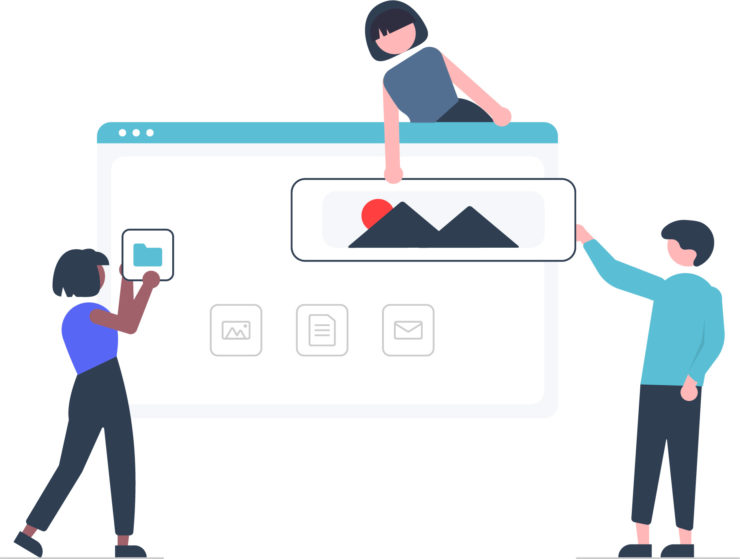
2. Outdated website design
One problem that goes hand in hand with point #1 is outdated website designs.
Web design is often an under-appreciated service. Many small business owners think they can get away building their website themselves to save resources.
As a result, business owners often neglect or overlook key web design aspects that make websites successful.
Your website needs to represent your brand in the most professional way possible to ensure your business is credible. You don’t want to give yourself a headache when it needs to be redone shortly down the track.
Roughly 40% of businesses who request our help say that making their website more modern & professional is their top priority.
Does your website’s design and overall layout reflect your brand’s identity? With billions of websites online, you have to ensure yours stands out from the crowd.
A professional web designer’s job is to build a website so that it is perfect from top to bottom. It is also their job to ensure that the best technology is used under the hood so that the website performs at its peak.
You can read more about things you should consider when designing for the mobile web here.
One important thing to note is that you should not make the mistake in hiring a graphic designer to redesign your website.
Most graphic designers can mock-up a website in Photoshop. However, there are big differences between the disciplines of graphic and web design.
I have lost count of how many business owners that have tried to redesign their website or asked their graphic designer to do it before coming to us.
Typically, the project stalls mid-redesign as they are unable to figure what’s the right thing to do.
In these cases, some of the most commonly overlooked web design elements are:
– Design that adheres to current modern & professional web design standards
– Websites built to be Google friendly by adhering to Google’s best practices
– Page layouts optimised to work well on mobile devices as well as desktop (responsive design)
– Integration with social media channels to encourage the social sharing of content
– Design that is focused around converting leads and sales
Here’s some action items we recommend following to ensure you do not fall into the same trap:
- Utilise the expertise of a professional web designer.
- Navigate through your website. Does it represent your brand in the best way possible? If not, it might be time for a website redesign.
- If you are not already, I would recommend using WordPress to manage your website.

3. Websites that are not periodically backed up
Is your website backed up on a regular basis? It should be!
In a recent study of over 40,000 of the most popular WordPress websites around the world, 73% of these websites are vulnerable to being hacked.
If your website is targeted, the attacker could get into your website and destroy it entirely.
How would it affect your business if you had a functioning website one day and then came back the next and you have nothing?
Would the time and cost that is needed to rebuild your website have a devastating effect on your business?
Don’t let this huge risk go by chance. You must ensure your entire website is backed up so that if it were ever to go down, it can be restored at a moment’s notice.
The rate of backups should occur relative to how often the content on your website is updated.
You will want to backup your website more regularly if you are constantly adding new content or selling products.
I suggest at the minimum you should backup your website once a week. This is done purely to protect your online investment.
There are many backup options for WordPress that do a great job. I have previously written about the top backup plugins for your WordPress website.
It is important to realise that if you are backing up your website to the same server where your website is hosted, you will risk not being able to restore it at all if the server goes down.
Also if your website is hacked then chances are the server is compromised meaning you might not have a backup available at all.
Make sure the backup is stored on a reliable external location so that if the server does go down, you will still be able to restore it at a moments notice.
When you have setup your chosen plugin, do a backup and see how you are able to restore your site if you need to.
Each solution has its own restore solution so be sure to work this out before you need it. It could save a lot of headaches if you do. Better yet, get someone dedicated to take care of this for you.
We use a combination of solutions to achieve our backups at Web3 like WP Engine with all of our hosted websites so we can rely on it to automatically creates backups for us.
InfiniteWP is also a way to schedule backups on a daily basis. If required we will use other plugins depending on the business’s website. Some of the other solutions we have used are WordPress Backup to Dropbox and BackupBuddy.
Here’s some action items to ensure your website is correctly backed-up:
- Make sure your website is backed up on a consistent basis. If it is not, get it set up!
- Work out your restore options if your website were to go down.
- Consider backing up to multiple locations to avoid an accidental loss of the backup.
- Make sure the backup location is separate to your website so you can restore it if the server was to go down.
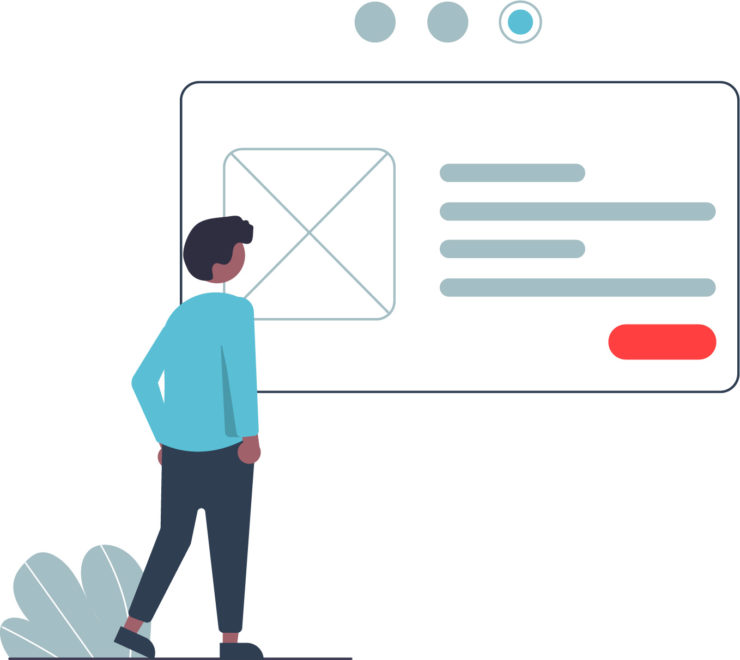
4. Lack of on-page optimisation and call to actions
Seven out of ten times your prospective customer will search for your product or service in Google before they find your business online.
Each person will type a different keyword phrase into Google to find what they are looking for.
If you want your website to show up more in Google when your customers are searching for solutions, it needs to have relevant content.
On the flip side, you don’t want to stuff each page with dozens of keywords in order for it to show up in search results.
Each page needs to be written so it sounds natural when read out loud. It should also have its own topic of focus with its own set of keywords.
By putting different keywords onto each page, you will find that certain pages on your site will rank higher than others.
When people search for your content, you can not expect each user to follow the exact same path to find your content on your website.
They may not visit your homepage at all.
Visitors may land directly on your contact page or a single blog post. That is why it is important to have strong calls to action on each of your pages.

To make sure your website has the best chance of capturing conversions, each of your top pages should provide engaging content that leads to a relevant call to action.
A call to action is your next step in progressing your customer towards working with you.
Potential customers won’t be inclined to take the next step with your business if the next step to them is not clear.
Think of it as a funnel where you are capturing the leads at the top and gently pushing them down the funnel to then make the sale at the end.
Here’s some of the most common call to actions:
- Call your business phone number
- Enter your contact details and send a message on your websites contact form
- Enter your email and subscribe to your news
- Like/share the page with followers on social media.
Usually, a call to action has an incentive attached for the customer to take the action such as being able to download something or receive exclusive content.
Often, sites won’t display a clear method of contact at all.
Far too many service based businesses that manage their own website lack any business phone number on their homepage at all.
This makes me wonder if businesses want their potential customers to buy their product or service at all. In fact, according to Hubspot, 51% of people think “thorough contact information” is the most important element missing from many company websites while 44% of website visitors will leave a company’s website if there’s no contact information or phone number.
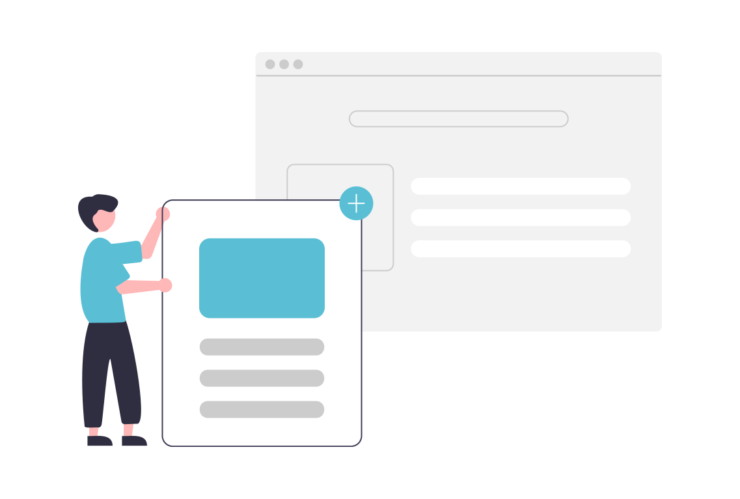
A great way to build up your email subscription list is to include the ability to subscribe to your blog. This can either be somewhere on your website or it can be embedded as a popup.
When a popup occurs, it is called interruption marketing because you are interrupting your users with a popup.
Often website visitors find that having a pop up on a page deters you from the browsing experience and can sometimes cause them to leave your site altogether.
A better way to utilise a popup on your website is to have the popup to occur when someone clicks on a link or attempts to exit your website.
This way, you are only ‘interrupting’ their viewing experience once they have finished engaging with what’s on the page.
This form of lead generation is called an exit intent. That is, the lead capture popup is only shown once the user shows the intent to exit your website.
With a relevant and valuable offer, you will be able to increase your newsletter signups with minimal loss to your website’s user experience.

5. Little or no social sharing options
If your website has a blog (and there’s no reason why it shouldn’t), you want to make it easy for your readers to share your content. It needs to be shareable to reach other potential customers within their own networks. This will generate brand awareness and exposure on social media without it costing you a cent!
Share buttons will help with getting your content out to your customers.You will often see share icons floating on the side of the page (look to the left side of this page for an example) as you scroll down the site.

Another great place to put these icons is in your website sidebar or page footer area. Once your viewer has finished reading the blog post, they will either navigate to somewhere else on your website or leave. Because of this, you want to make sure that your blog content is well linked to other pages and blogs within your website.
You can also tease your viewers with other relevant content on your blog by having a related posts section at the bottom.
If you have a decent social following, or your content gets a lot of shares, a good idea would be to include social counters. Social like counters can help establish social proof with your visitors, encouraging them to stay on your website.
Social proofing can help to reinforce the idea to potential customers that your business is the best fit for them. Over 70% of web users trust online opinions and social media allows opinions to be heard.
Utilising social media is a powerful way to grow your audience and gain awareness for your business. Social media is a way to increase exposure for your business to people that might not have seen your business otherwise.
It is important to make it easy for people to interact with your business or brand not only on your website but also on social media. It easier for your customers to engage with you and ultimately help you grow your business. Remember that your target market is not going to be absolutely everywhere (especially on the internet).
To save yourself time and money, make sure you focus your social networks to not only what works for you but to where your customers are congregating online.
Here’s some action items to improve your website’s use of social media:
- Add social proofing to your website
- Add social like and share buttons to your content.
- Setup social media accounts for your business.
- Only use the social media accounts if you can afford to do so and where your customers are online.
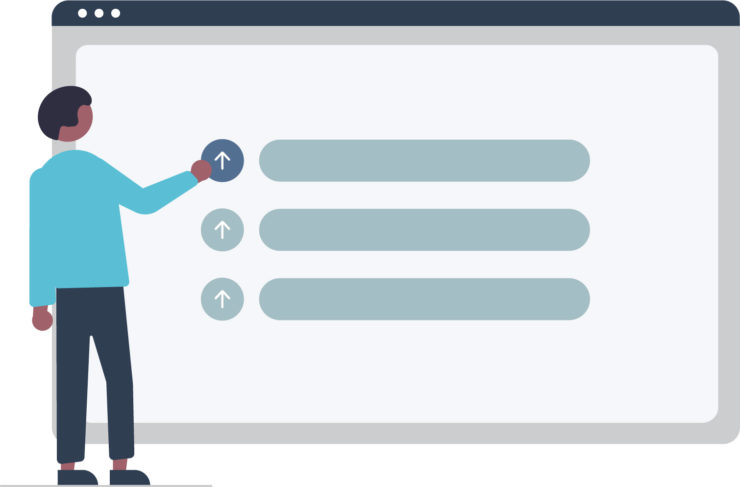
6. Self-managing time-consuming website tasks
When businesses decide to manage their own website, they often do not realise the amount of time involved.
86% of business owners that came to us in the last 12 months said they found it a challenge to keep up with managing all aspects of their website.
They agreed that it would have been more beneficial to get a team to help them with their site from the start.
Modern content management systems like WordPress have helped to reduce the time it takes to manage websites.
However, I’m sure you can be doing a lot better things with your time than debugging plugin errors!
Put simply, small business owners are much better off doing revenue generating actives.
It is easy and relatively cost-effective to delegate the task of ongoing website management to a professional team.
If you’re not sure if delegating the management of your website is going to be cost effective, follow these steps:
- Install a time tracking app like RescueTime which will silently track your time spent in the background as you work
- At the end of the month, take a look at your RescueTime dashboard and see how much time you spent working on your website.
- Think about how much each hour of your time is worth towards your business. Multiply this rate by the amount of time spent working on your website to get an idea of what is the opportunity cost.
- If this cost is greater than what it would cost to outsource it, then you should definitely consider delegating this task to a professional team.

Having a well-maintained website is critical if you want your business to prosper.
The more time and effort you put towards improving your website, the more valuable it will become.
Here’s some action items to help you better manage your time spent on your website:
- Complete a task audit on yourself to see where your time is being spent.
- If you are spending your time updating or maintaining your website, you should consider delegating or outsourcing these tasks.
7. Lack of website metrics and conversion tracking
If you do not know your website metrics, it is like driving a car blindfolded. You need to know your website numbers so that you can work out what parts need to be optimised, added, or revised.
You need to be able to consistently track these numbers because this information will change and evolve as more work is done on the site.
Some of the most important data that you should be capturing is:
– What sources are your website visitors coming? This information will help you better gauge which marketing channels are getting people to your website. That way, you can focus your marketing efforts on the channels which are driving visitors to your site.
– What keywords are your visitors entering in Google search to find you? Using the Google Search Console, you will be able to track exactly what keyword phrases are delivering visitors to your website. Knowing this, you can prioritise your SEO efforts, bettering your website page rankings for those keyword searches that are generating traffic.
– Once your visitors get to your website, what are they actually doing? When you know what elements and pages your visitors are engaging with, you can strategically create more pages. On the flip side, if your key website pages have huge bounce and drop-off rates, you should prioritise improving them.
– What is the demographics of your online audience? Knowing finer details about your website visitors’ e.g. gender, age or location can help you to refine your marketing messages. My showing the right offer at the right time to the right person will ensure your website maintains the best possible conversion rate.
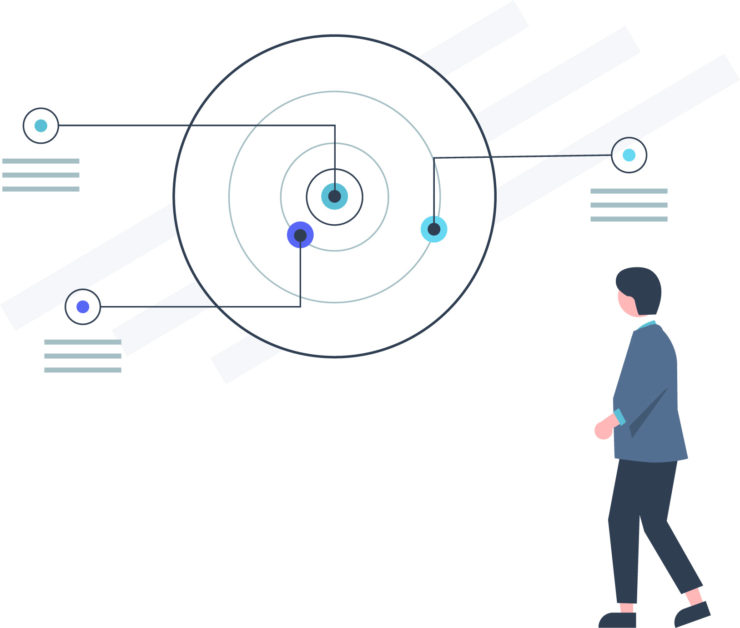
It’s not uncommon for businesses to have no clue if they have website analytics or not.
Setting up the tracking and taking action on the results will ensure that your website is your hardest working employee every single day. It really pays to have the right team behind you to ensure you have the data that you need to know.
Having good data is a great start, however, data is useless if you do not action it.
Using the data, look at what needs to be changed, updated, removed or deleted from your website to improve performance.
Do your customers go through the flow of your website the way you want them to?
Are they taking action on your call to actions? What parts of your page are getting the most clicks?
By using your website data to make decisions on how to improve, you are putting yourself head and shoulders above your competitors.
Here’s the action items to improve your website metrics and tracking:
- Add Google Analytics to your website if you do not have it tracking your website already.
- Get your data in shape. Get your data analysed so that it can tell you where to improve.
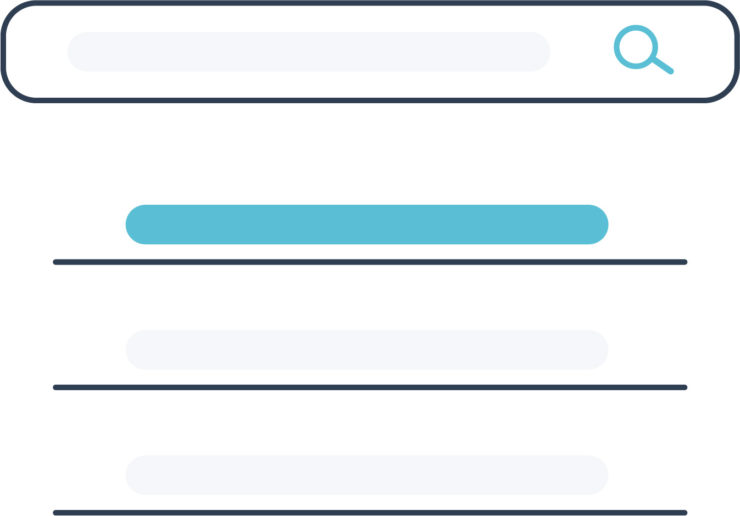
8. Little to no thought put towards getting the website to rank
How does your website rank in Google?
Thinking that if you build it, they will come is a surefire way to ensure your website remains hidden from the public.
For your website to work as a true asset, it needs to be easy for people to find it.
This is particularly true if your target audience is searching for solutions that you provide in Google.
Over 80% of all purchases (not just retail) are started online. Your customers can easily compare and find alternatives to your service. That is why your website needs to be kept updated to meet your customers’ ever changing needs.
One of the biggest questions businesses often ask is how to increase search rankings.
To do Search Engine Optimisation (SEO) effectively, it boils down to a number of aspects both on and off your website and involves a solid amount of work.
We’ve written quite a number of blogs on SEO, which you can view here.
One of the first things you should be aware of is the website theme that is powering your site.
Your website theme is like the foundations of your structure and should have been built with SEO in mind.
It is important to have the foundations right before you build a tall building. The same goes for your website.
If the framework sucks then what chance do you have at building a great tower?
If you are just starting out, I would recommend checking out the frameworks like Genesis that have been designed with SEO in mind. At Web3, we designed our own WordPress framework from scratch to include many SEO best practices by default.
This framework has helped propel many of our client’s websites, and our very own, to the top of Google in competitive niches like web design.
With the right framework in place, the next thing to get right is your website content.
You want to make sure that you are creating content for your website that is of the highest quality, is engaging and is easy to read.
Let me get one thing clear: your website content is not just the content you write on your blog.
In fact, the most important content to get right is the content on your top converting pages e.g your product and/or service pages.
In regards to your blog, each post should contain both a unique title and have unique post content.
One thing to keep it mind is if you are repeating content on your website. You need to make sure that your content is providing value, and is NOT copied and pasted from other websites. I have talked about this in a previous article.
If Google sees two pieces of very similar content, it will take note of this and usually choose to display one of the pieces of content rather than the two. The page that is displayed could be your competitor’s rather than your own in its search results.
Website page load time is another thing that has an incredible impact on your rankings.
You should always aim for each page on your site to load in 2 seconds or less.
If your customers have to wait to get to your content for more than a couple of seconds, you will more than likely loose them.
SEO is something that is ever-changing and requires a dedicated person to completely stay up-to-date. If you follow the above SEO suggestions, then you will be on the right track to succeed long term.
Here’s some action items on how to improve your website’s SEO:
- Make sure your website is built to best SEO standards. Get a second opinion.
- Create content for your website on a consistent basis. Make the content unique.
- Do a website load speed test on your website. If it’s slow, speed up your WordPress Website.
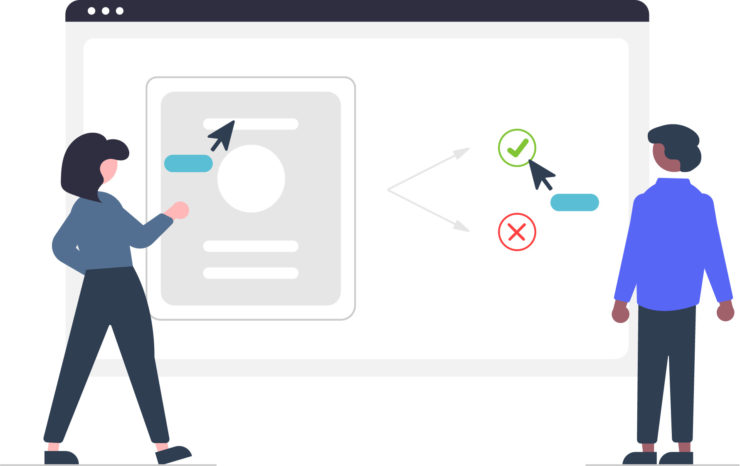
9. Poor user experience on mobile devices
It has become very common for consumers to access websites while they are on the go and away from their computers.
More than ever, there are now more people accessing websites on mobile devices than on desktop computers.
As a result, your website layout and design must display and work correctly on these devices. If not, then you are losing more than half of your potential audience in most cases.
Only 17% of websites are considered mobile friendly by Google, and many businesses are not aware that their website is not mobile capable.
It is also important to point out that nearly 60% of all online searches come from mobile devices, not desktop.
That is why your ranking in search engines needs to be number one.
When building a website you have to take into consideration all screen size variations. Often people who manage their own website will have it built to display correctly only on desktop computers. When it comes to viewing it on tablets or mobile phones, it becomes impossible to use.
In some cases, you will see websites that load on a mobile subdomain e.g http://m.example.com.au.
Google has stated that this is not the preferred way to display your website on mobile devices.
All websites should be designed to use the latest in responsive design standards. Your users will thank you and so will Google. A responsive website makes it easier to maintain and often more usable for your customers.
Here’s some action items to improve your website’s mobile experience:
- Use your website on as many devices as you can get your hands on (Desktop, tablet, and mobile).
- Invest in mobile responsive design so your customers have the best experience on your website on their devices.
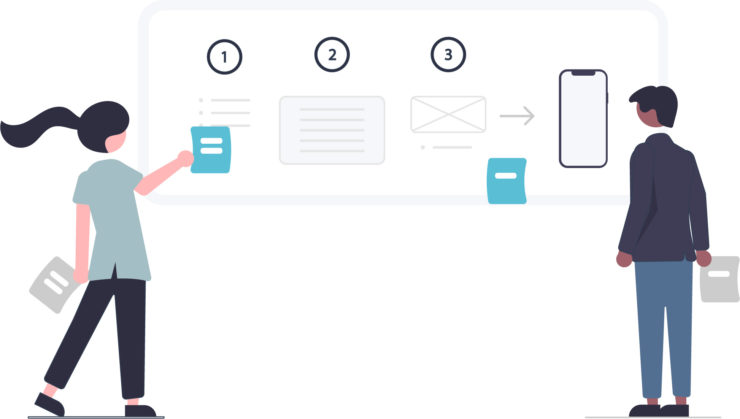
Summary
In conclusion, those are the top 9 problems small business owners face when trying to manage their own website.
For each problem, I have included some tips to be aware of to help you succeed. Leverage off the resources you have available to you.
You will be able to grow and evolve your service offerings much easier, faster and headache-free than if you do it all by yourself.
These tips will provide you with enough knowledge to help you make your website work best for you while allowing you to focus more on what matters most for your business. Keep your website fresh and updated so that search engines love you.
When you rank highly in Google, you will naturally attract more customers. Ensure you have a backup plan so that you can restore your website if anything bad ever happens.
I would hate to hear you have lost your website because you didn’t have a backup when it got hacked. You would be surprised how many people I speak to who have been hacked and had to start again.
Let me know in the comments if you have any questions or if you would like to find out more.


